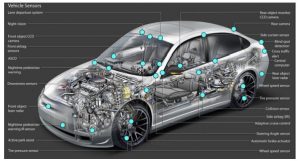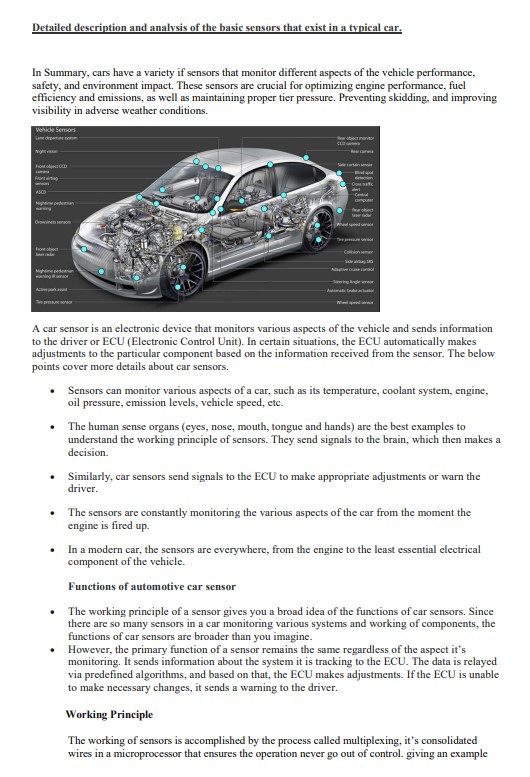Understanding Car Sensors
Summary:
The article provides a detailed analysis of the sensors found in a typical car. It explains that car sensors monitor various aspects of the vehicle, such as temperature, engine performance, emissions, and speed, among others. The sensors send information to the ECU, which can make necessary adjustments or warn the driver. The article lists several types of car sensors and their functions, including air-flow sensors, engine knock sensors, and oxygen sensors, among others. The article also explains the advantages and disadvantages of car sensors, such as making driving easier, detecting faulty components, and the potential cost of repairs.
Excerpt:
Understanding Car Sensors
Detailed description and analysis of the basic sensors that exist in a typical car.
In Summary, cars have a variety of sensors that monitor different aspects of the vehicle’s performance, safety, and environmental impact. These sensors are crucial for optimizing engine performance, fuel efficiency and emissions, and maintaining proper tire pressure. Preventing skidding and improving visibility in adverse weather conditions.

Understanding Car Sensors
A car sensor is an electronic device that monitors various aspects of the vehicle and sends information to the driver or ECU (Electronic Control Unit). In certain situations, the ECU automatically makes adjustments to the particular component based on the information received from the sensor. The below points cover more details about car sensors.
- Sensors can monitor various aspects of a car, such as its temperature, coolant system, engine,
oil pressure, emission levels, vehicle speed, etc. - The human sense organs (eyes, nose, mouth, tongue and hands) are the best examples to
understand the working principle of sensors. They send signals to the brain, which then makes a decision. - Similarly, car sensors send signals to the ECU to make appropriate adjustments or warn the driver.
- The sensors are constantly monitoring the various aspects of the car from the moment the engine is fired up.
- In a modern car, the sensors are everywhere, from the engine to the least essential electrical
component of the vehicle.


Reviews